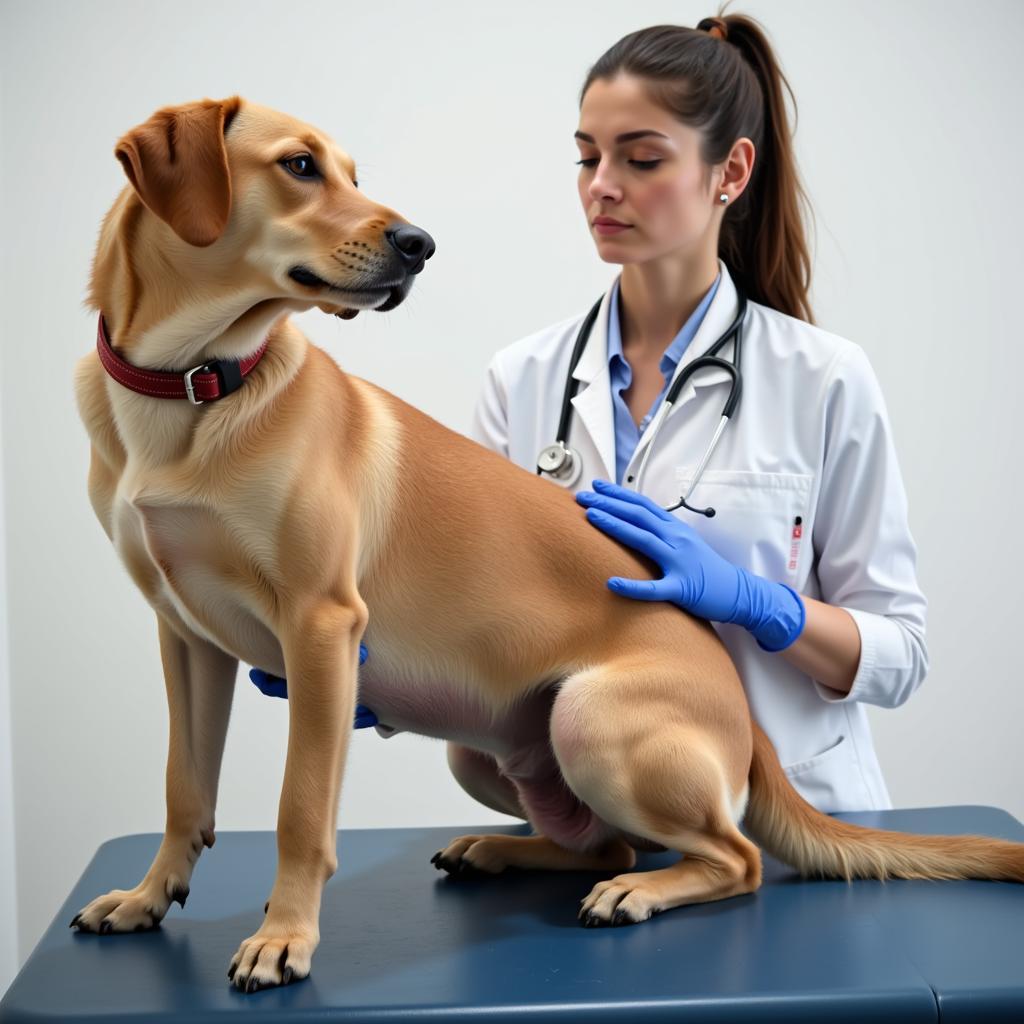Low Purine Dog Food is crucial for dogs prone to bladder stones or other urate-related health issues. Choosing the right diet can significantly impact your furry friend’s well-being, preventing painful conditions and promoting a longer, healthier life. This guide explores everything you need to know about low purine diets for dogs.
Why is Low Purine Dog Food Important?
Some dogs are genetically predisposed to developing bladder stones, particularly those made of urate. These stones form when purines, naturally occurring compounds in food, break down into uric acid. If the uric acid isn’t properly eliminated, it can crystallize and form stones in the urinary tract. Low purine dog food helps manage uric acid levels, reducing the risk of these painful and potentially dangerous stones.
What are the signs of urate bladder stones? Symptoms can include frequent urination, straining to urinate, blood in the urine, and even urinary blockage, which is a medical emergency. If you notice any of these signs, consult your veterinarian immediately. They can diagnose the problem and recommend the best course of action, which may include switching to a low purine dog foods.
Choosing the Right Low Purine Dog Food
Selecting the appropriate low purine diet is essential for managing your dog’s health. Not all dog foods are created equal, and it’s crucial to understand the ingredients and nutritional composition. Look for foods specifically formulated for urate management, often labeled as “low purine” or “urinary health.” These diets typically restrict purine-rich ingredients like organ meats, red meat, and certain seafood.
What about homemade low purine dog food? While preparing your dog’s food at home can be appealing, it’s essential to consult with a veterinary nutritionist to ensure the diet is balanced and meets your dog’s specific needs. Improperly balanced homemade diets can lead to nutritional deficiencies or exacerbate existing health problems. You may also be interested in exploring the best food bowl for bulldogs.
 A dog enjoying low purine kibble
A dog enjoying low purine kibble
Key Ingredients to Look For
- High-quality protein sources: While limiting purines, the food should still provide adequate protein from sources like eggs, chicken breast, or white fish.
- Controlled levels of phosphorus: Phosphorus can contribute to stone formation. Low phosphorus levels are often recommended for dogs with urate stones.
- Added fiber: Fiber can help regulate digestion and support urinary health.
- Omega-3 fatty acids: These can reduce inflammation and support overall health.
- Antioxidants: Antioxidants can help protect against cell damage and support a healthy immune system.
Ingredients to Avoid
- Organ meats (liver, kidneys, etc.): These are extremely high in purines.
- Red meat (beef, lamb): These meats contain moderate levels of purines.
- Certain seafood (sardines, anchovies, shellfish): These can be high in purines.
- Yeast and yeast extracts: These are often used as flavor enhancers but can be high in purines.
Transitioning to a Low Purine Diet
Switching your dog to a new food should be done gradually to avoid digestive upset. Start by mixing a small amount of the new low purine food with their current food. Gradually increase the proportion of new food over 7-10 days until they are eating the new diet exclusively.
“A gradual transition is key to minimizing digestive issues when changing a dog’s food,” says Dr. Emily Carter, DVM, a board-certified veterinary nutritionist. “It allows the dog’s digestive system to adjust to the new ingredients and prevents sudden changes that can cause diarrhea or vomiting.”
 A dog transitioning to low purine food
A dog transitioning to low purine food
Monitoring Your Dog’s Health
Regular veterinary check-ups are crucial, especially when managing a health condition like urate stones. Your veterinarian will monitor your dog’s urine and overall health to ensure the low purine diet is effective. They may also recommend additional treatments or medications if necessary. You can learn about suitable food bowls for certain breeds, such as the english bulldog food bowl.
“Regular monitoring allows us to track the effectiveness of the diet and make adjustments as needed,” explains Dr. Michael Davis, DVM, a specialist in small animal internal medicine. “It also helps us identify any potential complications early on and provide the best possible care for the patient.”
 Veterinarian examining a dog
Veterinarian examining a dog
Conclusion
Low purine dog food plays a vital role in managing urate-related health issues. By understanding the importance of this specialized diet and carefully selecting the right food, you can help your canine companion live a healthier, more comfortable life. Remember to consult with your veterinarian for personalized guidance and regular monitoring. Consider adding some chicken and rice dog food wet to your dog’s diet as a tasty complement.
FAQ
- What are purines?
- How do I know if my dog needs low purine food?
- Are there any side effects of low purine dog food?
- Can I give my dog treats on a low purine diet?
- How much low purine food should I feed my dog?
- What if my dog refuses to eat low purine food?
- Are there other ways to prevent urate stones besides diet?
Need support? Contact us at Phone Number: 02437655121, Email: minacones@gmail.com Or visit us at: 3PGH+8R9, ĐT70A, thôn Trung, Bắc Từ Liêm, Hà Nội, Việt Nam. We have a 24/7 customer service team.